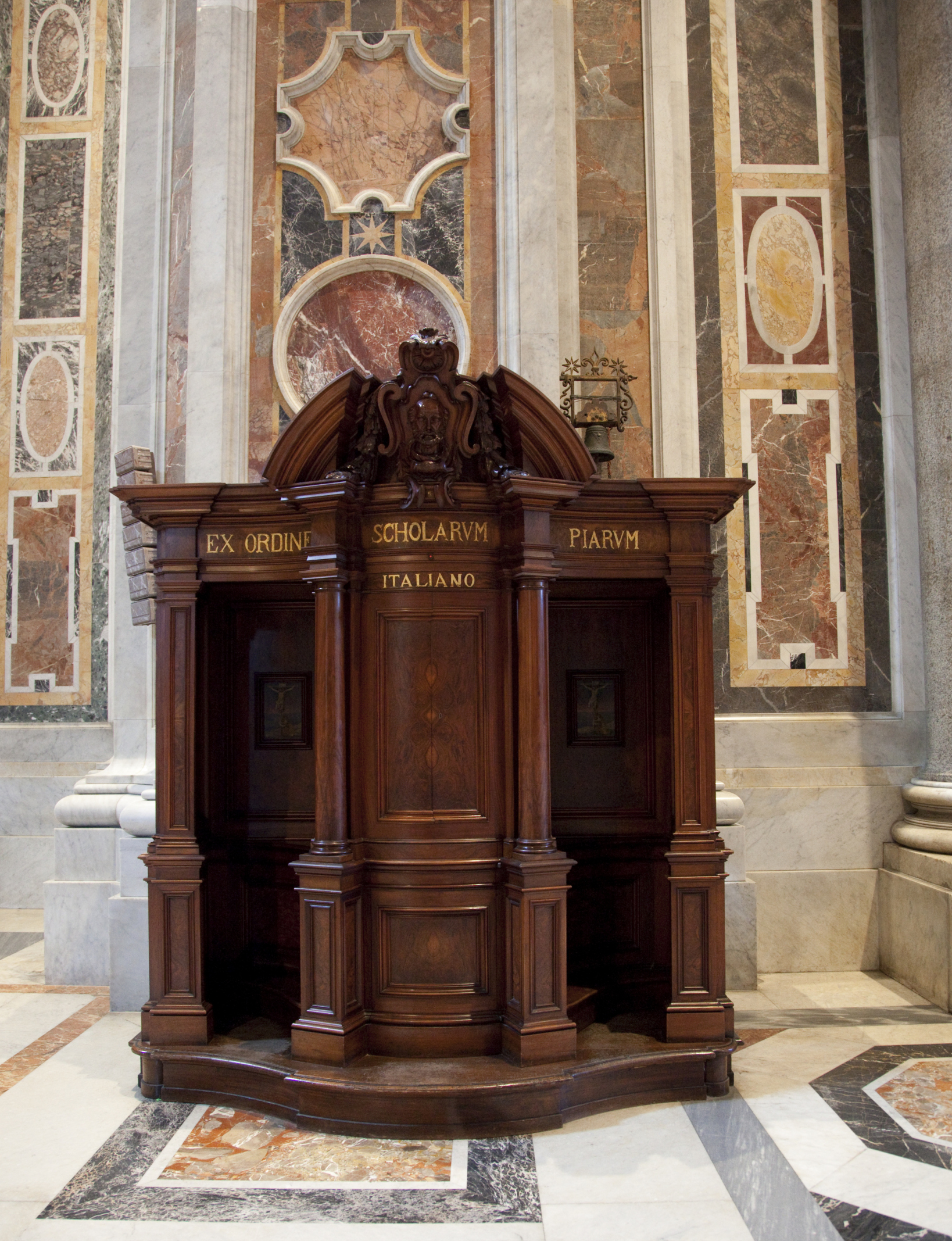Confessional
- The book confessional and
- Traditional seating and workplace for the innkeeper in Cologne breweries and inns ( = " counter Schaaf " )
The confessional is a mandatory part of the device Catholic churches. He is the classic (but not the only possible ) location of the personal confession of the faithful, the absolution by the priest follows ( Sacrament of Penance ).
History
The present form of the confessional comes from the Baroque period. It is an almost closed, cabinet-like, wooden, often decorated with ornate carving furniture piece which is divided into two or (usually) three internal rooms: one for the priest, one (or two ) for the penitent (two for alternating - not simultaneous - use). The part of the priest includes a seat facing the door, the part of the believer a kneeler, aligned to the barred opening in the partition through which the commitment is spoken.
There are also semi-open confessionals and those in which the penitent remains fully visible. These forms are closer to the historical original shape.
The oldest form of the confessional, to be the German name still reminds us, is that of a real chair for the priest, knelt next to the penitent on the floor.
Since then, it was starting practiced by the monasteries, the sacramental private confession in the Middle Ages increasingly also in parish ministry, was built for them as their own liturgical place a chair, usually near the altar. In The Chair (then a rare and important piece of furniture ) symbolized the statutory deputy character of the confession and absolution of action ( cf. cathedra ). Since the Middle Ages the carving of many confessionals also includes roses as a symbol of secrecy: the priests were the Beichtgeheimnisse " Sub rosa " ( " under the rose " ), that is communicated strictly confidential.
All later forms of the confessional come to meet the need to preserve the secrecy of confession to a third party and a certain anonymity against the priest.
In modern Catholic church buildings can be found instead of the confessional, often confessional in which both kneeling behind a grid-like partition can be like sitting confession in open form of conversation.
Also, in Lutheran churches, some magnificent confessionals were built until the 18th century, of which many have received. However, you are lacking in the rooms of the Reformed confessions because of the different assessment of individual confession.









